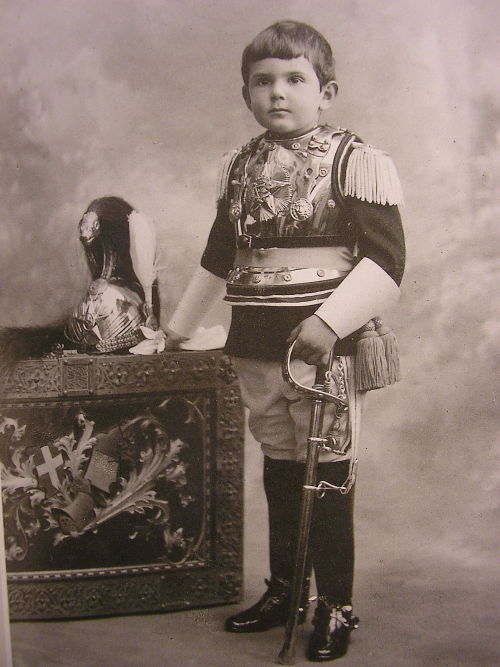Last Italian King
Two Savoys Return to Italy - Regalis Don't see the menu? Activate JAVA (or scripting) or visit the.
 May 9, 2011 - Officially the last King of Italy and last reigning member of the venerable royal house of Savoy, Umberto II occupied the throne for so short a.
May 9, 2011 - Officially the last King of Italy and last reigning member of the venerable royal house of Savoy, Umberto II occupied the throne for so short a.

This page linked from: Son of Last King of Italy Returns © 2003 L. Mendola Two of the few European royals who still found themselves exiled from their country in the year 2001 have finally returned to Italy. Office 365 torrent download pirate bay. Prince Vittorio Emanuele, son and heir of King Umberto II of Italy, accompanied by his son, Prince Emanuele Filiberto, and consort, Princess Marina, visited the Pope briefly during the morning of 23 December 2002.

For Vittorio Emanuele, Duke of Savoy, it was his first visit to Italy since 1946. For thirty year-old Emanuele Filiberto, born in exile, it was the first ever. Well, almost, since his airplane had landed in Italy on at least one occasion in the past, while returning to Switzerland from a mission to deliver medical supplies in the Balkans. The Duke of Savoy had occasionally ventured into Italian territory while skiing in the Alps. Arriving by private jet from Switzerland, the royal family landed at Ciampino Airport outside Rome, from whence King Umberto II had departed for exile in 1946, following his wife and children (including a young Vittorio Emanuele), who had already left by ship from Naples.
Name Of Last Italian King
Accorded full diplomatic status as guests of the Vatican, Vittorio Emanuele and his family were escorted into the Eternal City for a long meeting with His Holiness before returning to Switzerland by early afternoon. The official Papal invitation ensured that the family's first visit to Italy would permit them the honours normally reserved to heads of state, which is the status granted by the Vatican to the heads of many non-regnant royal families. The royal family was met by a small entourage consisting of Prince Sergei of Yugoslavia, also a grandson of King Umberto, and a few friends. Emanuele Filiberto took some pictures, but there were few journalists present.
A smiling Vittorio Emanuele showed his newly-issued Italian passport to photographers. The constitutional law prohibiting the return of male descendants of the King of Italy was finally abolished by a law promulgated 23 October 2002, published on the 26th and effective from 10th November. Recuperating from a spinal cord injury, the Duke of Savoy explained that he also wishes to meet with the President and Prime Minister as soon as possible. Meeting privately with the Pope, who presented them with rosaries, the Savoys made a gift to the Pontiff of two books about their dynasty and a print of the Venerable Maria Cristina of Savoy, consort of King Ferdinando II of the Two Sicilies.
Kings Of Italy
A half century is a long time. Conservative jurists claimed that the stated 'transitory' nature of the exile meant it to be intended as temporary, and following the death of King Umberto twenty years ago his consort, the late Queen Maria Jose, was allowed to return to Italy on the basis that as a widow she could no longer be the consort of a dead man. Yet, the long exile, criticised in certain quarters for decades, had become a political issue here in Italy, where there seems to be a political philosophy for every citizen. Extreme leftists (Communists) argued that King Vittorio Emanuele III's tacit collaboration with Fascism's wars, racist laws, and social policies had forever compromised the dynasty, today comprising just four dynasts (namely Vittorio Emanuele, his son Emanuele Filiberto, Amedeo of Aosta and his own son, Aimone), the older two of whom were but young children when the Second World War ended in 1945. Post-war right wingers (such as the National Alliance) argued for the family's right to return, but many former Fascists and hard-line nationalists criticised them for the Sovereign's change of alliance in September 1943 following the Allied invasion of Sicily (at which HRH The Duke of Edinburgh was present as a young officer) and the Savoys' subsequent withdrawal from Rome. More vocal separatists (characterised by the Northern League), meanwhile, in supporting a new federalism, opposed the family's return based on their unification of the country in the 1860s.